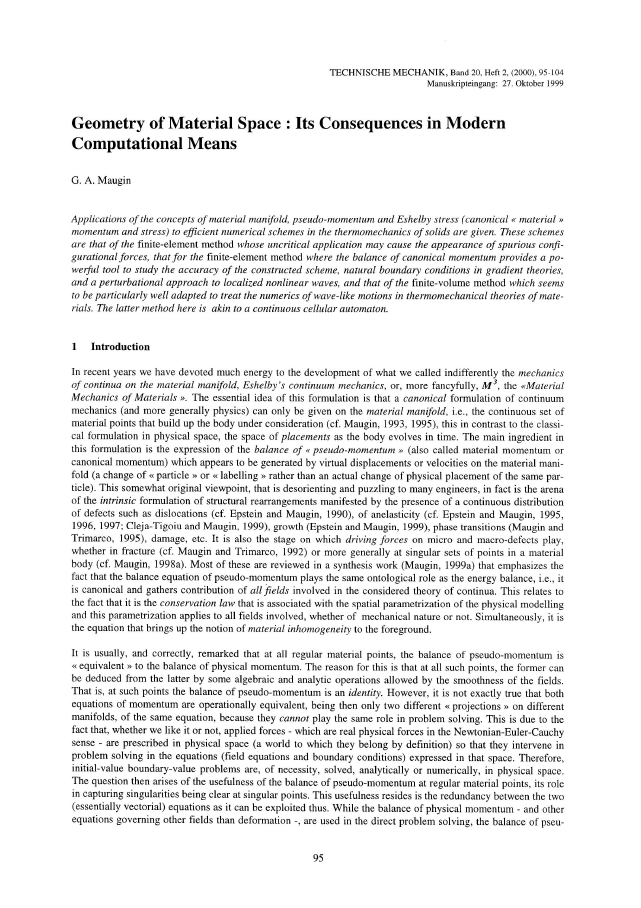Geometry of Material Space
Its Consequences in Modern Computational Means
Abstract
Applications of the concepts of material manifold, pseudo-momentum and Eshelby stress (canonical « material » momentum and stress) to efficient numerical schemes in the thermomechanics of solids are given. These schemes are that of the finite-element method whose uncritical application may cause the appearance of spurious configurational forces, that for the finite-element method where the balance of canonical momentum provides a powerful tool to study the accuracy of the constructed scheme, natural boundary conditions in gradient theories, and a perturbational approach to localized nonlinear waves, and that of the finite-volume method which seems to be particularly well adapted to treat the numerics of wave-like motions in thermomechanical theories of materials. The latter method here is akin to a continuous cellular automaton.





